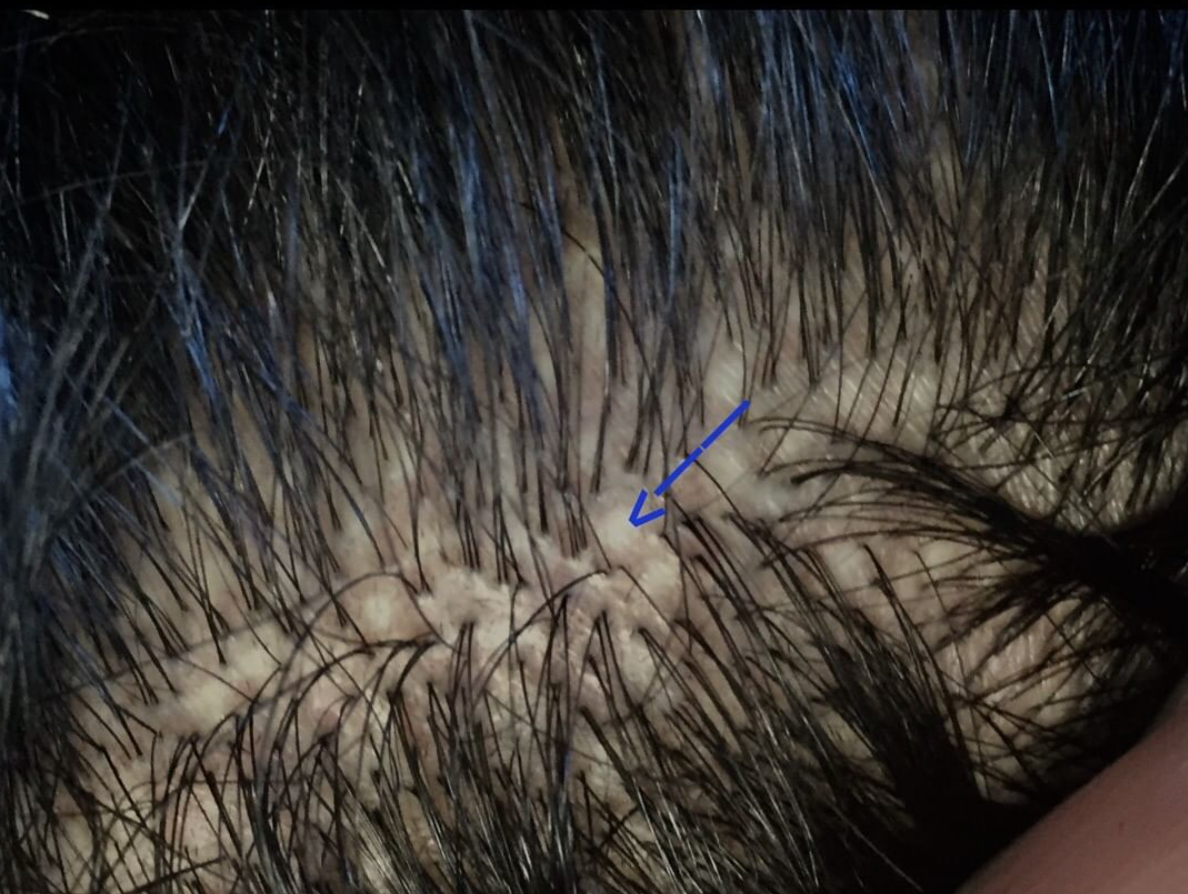White hypopigmented scarring with FUE
FUE is not scarless but scars can appear barely detectable
Hair transplantation involves moving hair from one area of the body to another. Most commonly, hair transplants involve moving hair from the back of the scalp to the more frontal areas of the scalp (i.e. hairline, midscalp or crown). There are two main ways that hair transplant surgery is done nowadways. One is known as follicular unit strip surgery (FUSS or FUT) and the second is known as follicular unit extraction (FUE).
FUSS/FUT involves the removal of a strip of skin and hair from the back of the scalp. Sutures are used to close the wound that was created. The individual hairs are then obtained by delicately cutting up the hairs using a microscope. The result of FUSS/FUT is a linear scar that runs along the back of the scalp.
The second type of surgery is increasingly referred to as follicular unit “excision” surgery and involves the excision of follicular units one by one from the back of the scalp using a “punch” device. One of the common and unfortunate misconceptions is that FUE is “scarless.” In fact, many advertisements list “scarless” as one the benefits of FUE over FUSS/FUT. FUE is not scarless. Anytime the skin is injured down in the deeper layers a scar has the potential to form. FUE involves removal of complete hairs - even hairs that were once rooted deep down in the fat layer.
Circular whitish scars in a patient with a previous FUE transplant
By definition, FUE is not a scarless procedure. A tiny scar forms during the procedure. Fortunately, however, the scars with FUE tend to be quite small and sometimes quite difficult to detect. That usually makes it difficult for anyone to see evidence that the patient had a procedure in the past.
For some people, very small circular whitish scars can be seen post surgery as seen in this photo. These circular scars may be quite difficult to notice but an astute eye can sometimes make out the areas in the donor area where the FUE punch took the hairs during the surgery. Some people also develop small amounts of redness in the donor area too which makes the whitish hypopigmented circles a bit more noticeable. Over time, redness may fade to some degree leaving the whitish circles less noticeable. Some people maintain permanent faint redness
This article was written by Dr. Jeff Donovan, a Canadian and US board certified dermatologist specializing exclusively in hair loss.

